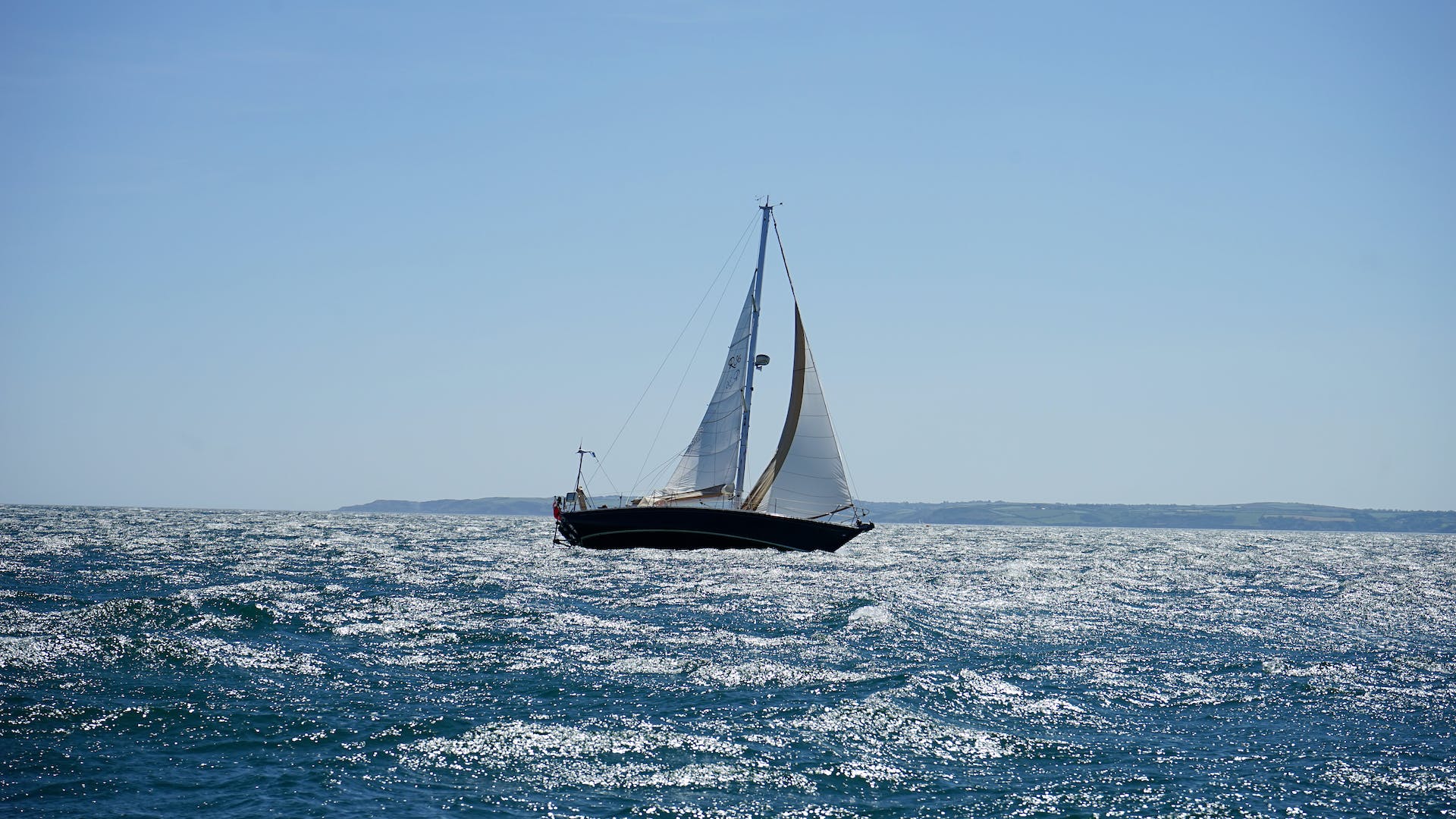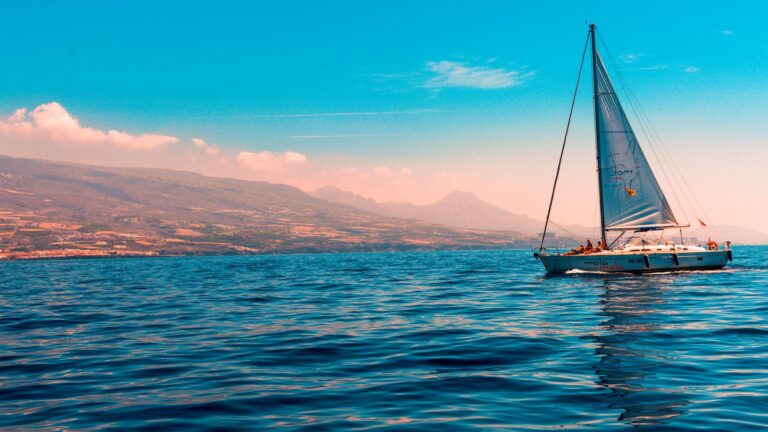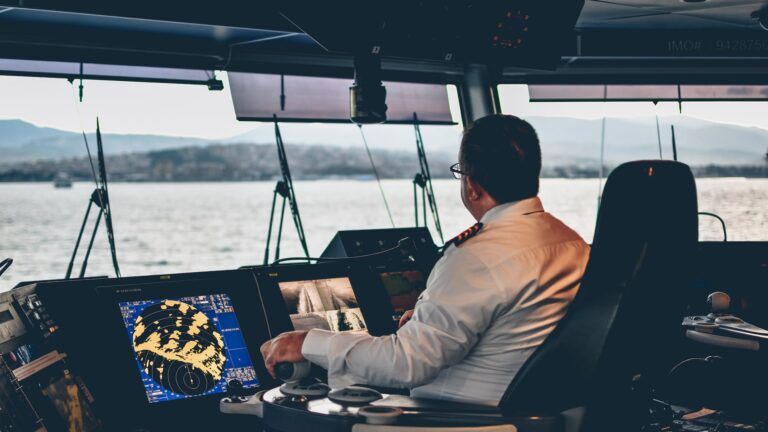What Is The Best Wind Direction For Sailing?
The Best Wind Direction for Sailing
Sailing is one of the most enjoyable outdoor activities that you can do and it is important to know the best wind direction for sailing in order to maximize your experience and perform optimally on the water.
This article will explain what a reach is, why it is generally considered the best wind direction for sailing, other considerations when choosing a wind direction, ideal wind speed, and angles off the wind, as well as strategies and tips that can help you sail in different conditions.
What is a Reach?
A reach is when the wind comes from one side of your boat, typically at an angle of between 90-120 degrees off your bow (the front of your boat).
This is considered the best wind direction for sailing because it allows you to sail in a straight line without having to keep adjusting your course due to changes in the wind direction or strength.
It also allows you to move faster because you don’t have to fight against waves which can slow down your boat if they are coming from a different direction than the wind.
Additionally, sailing with a reach gives you more control over your boat since it allows you to take advantage of any gusts or lulls in wind strength while still keeping control over your boat’s movements and heading.
Benefits of Sailing With a Reach
The main benefit of sailing with a reach is that it allows you to sail faster and more efficiently than other wind directions since you are not fighting against waves or having to constantly adjust your course due to changes in wind direction or strength.
Additionally, it gives you more control over your boat’s movements and heading which can be important when sailing in tight spaces or close quarters with other boats on the water.
Finally, sailing with a reach allows you to take advantage of gusts or lulls in wind strength which can help increase your speed or give you an edge over other boats on the water if you are racing or competing.
Other Considerations for Wind Direction
In addition to considering which direction provides the best performance when sailing, there are other factors that should be taken into account when deciding on what direction to sail in such as weather conditions, visibility and comfort levels on board as well as personal preference or skill level of those onboard the vessel.
For example, if visibility is low then sailing downwind may be preferable so that any obstacles can be seen before they become an issue, additionally if comfort levels onboard are low then sailing upwind may be preferable so that everyone remains comfortable while onboard instead of being jostled around by waves coming from different directions than the wind itself.
Finally personal preference may dictate what direction someone chooses depending on their skillset and experience level, some individuals may prefer sailing upwind as they feel more comfortable going against the current whereas others may prefer downwind as it requires less effort overall but still provides plenty of enjoyment out on the water!
Ideal Wind Speed for Sailing
The ideal wind speed for sailing varies depending on conditions such as weather and visibility but generally speaking most sailboats perform optimally between 5-12 knots (5-13 mph).
This range gives enough power behind each gust so that sailors can achieve maximum performance without being overpowered by too much force from higher winds which could cause difficulty controlling their boat’s movements and heading .
Higher winds may also cause extra wear and tear on sails due to increased strain so this should also be taken into consideration when choosing an optimal speed range .
Angle Off The Wind For Optimal Performance
The ideal angle off the wind at which most sailboats perform optimally is 30 degrees . This angle gives sailors enough room to maneuver their sails while still being able to catch enough gusts from behind them so that they maintain optimal speed throughout their journey .
Any angle outside this range will likely result in slower speeds due either too much drag from being too close into the eye of the breeze or too little power coming from behind them if they are too far away from it .
Strategies For Different Wind Directions
Depending on what type of vessel someone is sailing , different strategies should be employed when dealing with different types of winds .
For example , smaller vessels such as dinghies should use light air strategies such as sheeting out sails more than larger vessels because their sails are designed differently which means they require less power behind each gust .
Additionally , heavier vessels should use heavy air strategies such as reefing sails early so that they don’t become overpowered by higher winds .
Finally , large vessels such as cruisers should use distance strategies such as tacking further away from land masses so that they have more room to maneuver their sails without becoming stuck due to shallow waters close into shorelines .
Reasons To Sail With The Wind Behind You
Sailing with the wind at your back has several advantages including increased speed , less effort required overall , reduced drag , and improved navigation since obstacles will become visible sooner than if facing them head-on .
Additionally , having tailwinds provide extra maneuverability which can help sailors gain an edge over competitors if racing or competing on open waters . Lastly , tailwinds make it easier for sailors who aren’t experienced enough yet to handle strong headwinds since there won’t be any gusts pushing against their sails at all times like there would be when facing head-on winds .
Reasons To Sail With The Wind In Front Of You
Sailing into headwinds has several advantages including increased control over one’s vessel since any gusts pushing against them will help push them forward rather than slow them down like tailwinds do, additionally headwinds give sailors more time before obstacles become visible making navigation easier overall .
Furthermore , having headwinds provide extra maneuverability which can also help sailors gain an edge over competitors if racing or competing on open waters by allowing them more time before making course corrections due sudden changes in weather conditions or unexpected obstacles becoming visible sooner than expected .
Lastly , headwinds provide extra practice and challenge for experienced sailors since they have more opportunities available when facing these winds compared those who only have tailwinds at their disposal !
Tips For Sailing In Different Conditions
When dealing with different types of winds , it is important for sailors take into account several factors including weather conditions , visibility levels , comfort levels onboard , personal preferences/skill levels onboard etc…
Additionally some tips can help make sure everyone stays safe while out on open waters no matter what type of conditions exist ! These include : always checking local forecasts before leaving shore , carrying multiple types/layers clothing appropriate for changing weather conditions , always wearing lifejackets , practicing proper safety protocols , always double checking all equipment before setting sail , always staying aware/alert while out on open waters , never underestimating nature/weather patterns etc…
Conclusion
In conclusion , understanding what type of winds exist and how they affect performance while out on open waters is essential knowledge every sailor should master ! Generally speaking side ‘reaches’ provide optimal performance but there are many other factors that need taken into account before deciding what type/direction works best given current weather/environmental conditions !
Additionally understanding ideal speeds required for certain vessels/conditions along with angles off breeze lines all helps ensure maximum efficiency while out on open waters !
Finally following appropriate safety protocols along with staying aware/alert while out on open waters helps ensure everyone returns home safely no matter what type/direction winds present themselves during journey !







